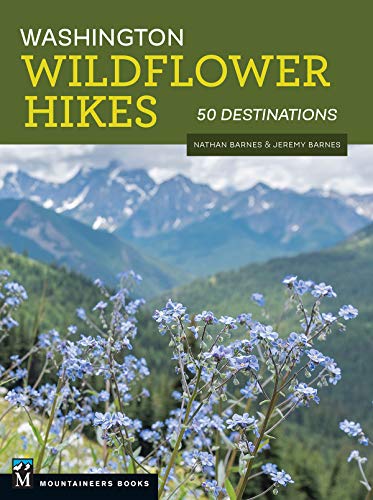Boulder Cave Trail #962
This short trail is a great way to stretch your legs on a long road trip out to Yakima while checking out some interesting geology.
Total Distance: 1.5 miles
Total Ascent: 250ft
Highest Point: 2700ft
Total Ascent: 250ft
Highest Point: 2700ft
To get there, take I-5 south to Highway 18 at Exit 142A. Follow Highway 18 into Auburn and take the SR 164 exit. Head left on SR 164 through Enumclaw to SR 410. Head left onto SR 410 and continue 71 miles to Forest Road 1704, signed Boulder Cave. Take a right over the river and follow the signs about a mile to the trailhead. View Google Directions >>
Boulder Cave #962 is a very short trail, wide enough to accommodate the crowds that flock to it. The trail runs along the top of the gorge before dropping down to the far end of the cave through a series of switchbacks and boardwalks that help even the youngest hikers navigate their way down to the creek. Visitors are all funneled in one direction to keep people shuffling through the darkness at a steady pace. As you enter the cave the temperature drops, the dark closes in, and the creek echoes loudly off the slanted ceiling. In less than five minutes, you’re back in the daylight and headed back to the car.
This isn’t much of a hike, but it’s a nice little roadside attraction. It’s also very toddler-friendly, making it a good choice for young families. However, the easy access means that you should expect a lot of company. Boulder Cave sees hundreds of visitors a day and parking is often a challenge. If you go, be prepared to share the trail. Some respite from the crowds can be found by forgoing the cave and continuing to follow the trail. The unmaintained path quickly thins and passes a small waterfall before depositing you at the creekside. From here, it’s possible to scramble a half-mile upstream to Devil Creek Falls.
This isn’t much of a hike, but it’s a nice little roadside attraction. It’s also very toddler-friendly, making it a good choice for young families. However, the easy access means that you should expect a lot of company. Boulder Cave sees hundreds of visitors a day and parking is often a challenge. If you go, be prepared to share the trail. Some respite from the crowds can be found by forgoing the cave and continuing to follow the trail. The unmaintained path quickly thins and passes a small waterfall before depositing you at the creekside. From here, it’s possible to scramble a half-mile upstream to Devil Creek Falls.
History
Boulder Cave is something of a misnomer, as it’s really a 300ft long tunnel arching over Devil’s Creek. The tunnel was created when the creek, which had been happily carving a small canyon through the hard basalt left by ancient lava flows, suddenly found a layer of softer rock beneath the basalt. The creek quickly began to wear away at the underlying rock, eventually causing part of the canyon wall to tip over, enclosing the creek in darkness. The tunnel then became home to a colony of Pacific Western big-eared bats. Once numbering in the thousands, after the Civilian Conservation Corps built the trail and recreation area in 1935, the bat population quickly declined as visitors increased. Today, only a handful of bats return during the winter to hibernate. To protect them, the Forest Service closes the trail from October to May. Although the trail is only open four months a year, it still sees over 35,000 visitors annually.
Nearby hikes
- None
Similar Difficulty
Similar Features












